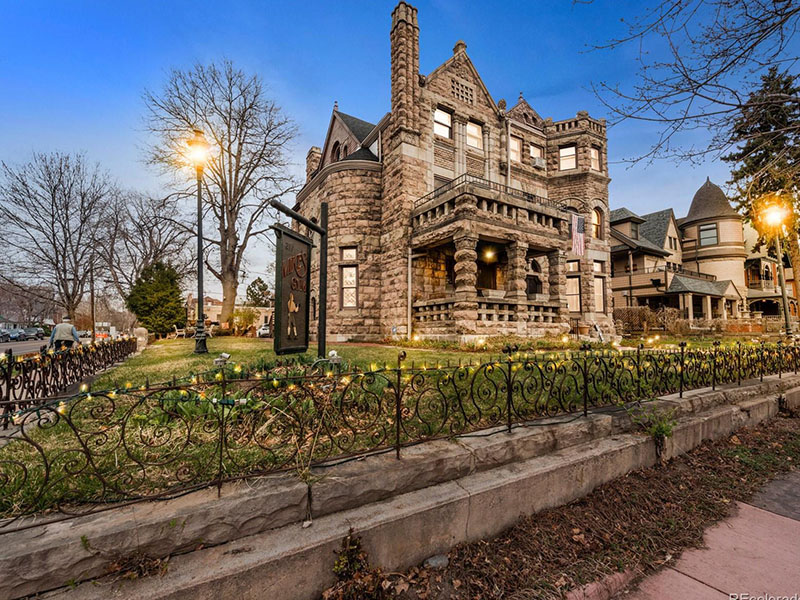
Historic homes are the silent and unchanging witnesses to the rapidly changing world. Decades have gone by, yet these homes have retained their original designs and their cozy charm. Sturdy and timeless, they could never quite compare to the sleek designs of today’s modern homes because they’re a class of their own.
These types of homes can be found all over the country, including Denver. In fact, some of the historic homes here are now being used as tourist destinations. Others, meanwhile, are listed for sale, ready to help their new owners make new memories.
Table of Contents:
Denver’s popular historic homes
Here’s a quick look at the iconic historic homes of Denver, their history, and their current state.
Capitol Hill Mansion
1207 N. Pennsylvania Street
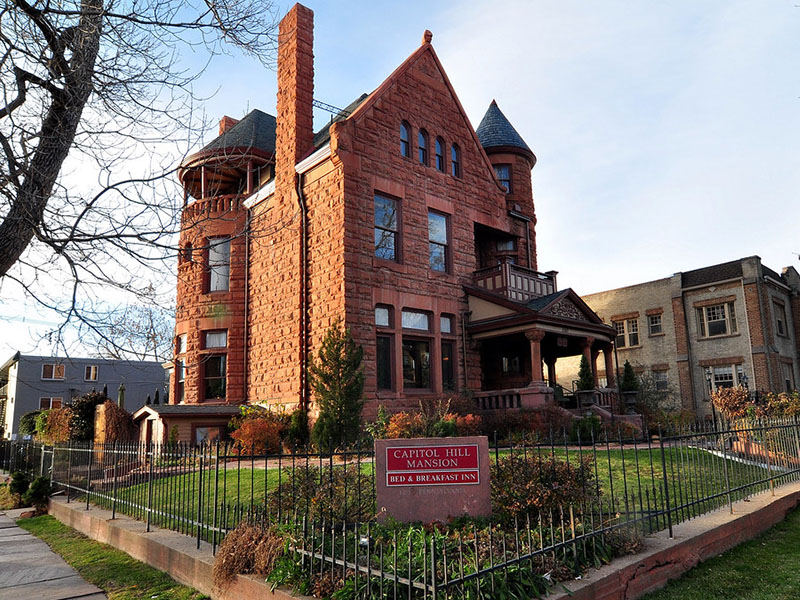
The mansion is described as “one of the last splendid homes erected before the Silver Crash of 1893 when the government stopped buying silver to support the currency.” It was originally built for the Keating family back in 1894, and its style says much about the homes built during that period. Of note is the mansion’s Richardsonian Romanesque style, complete with an eight-foot stained-glass window and fireplaces.
More than a century later, the Capitol Hill Mansion – one of the most iconic Denver historic homes – was opened to the public as a bed and breakfast inn. Visitors can stay in any of the eight guest rooms in the mansion, each named after a wildflower found in Colorado, and enjoy an egg souffle personally prepared by its current owner, Carl Schmidt II.
Colorado Governor’s Residence
400 E. Eighth Avenue
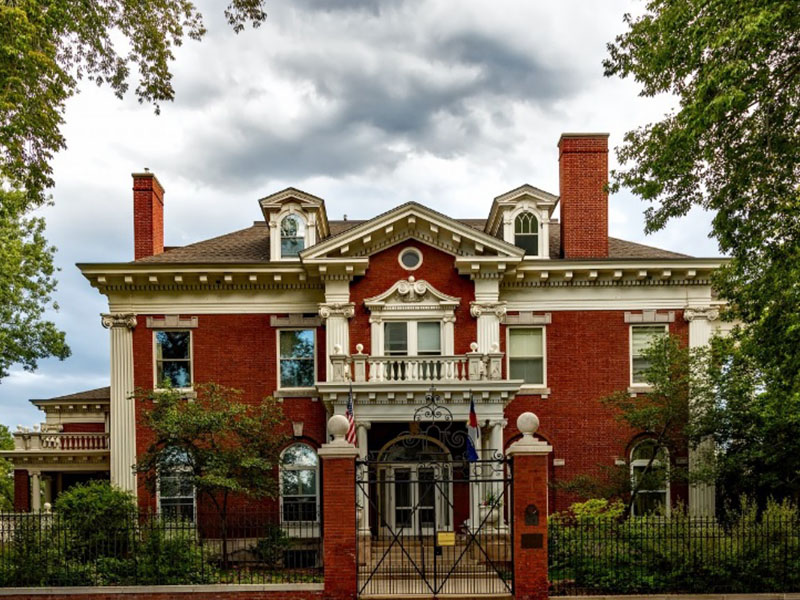
Known as “Colorado’s Home”, the majestic historic home was originally built for a businessman named Walter Cheesman back in 1908. However, Cheesman died before construction was finished. In lieu of his passing, the house was then sold to Claude Boettcher in 1923 for $75,000.
According to local historians, the house was always owned by a woman before it was offered to the state of Colorado in 1959. Former Gov. Stephen McNichols was the first chief executive officer to use the house as his residence, and some of his successors used to reside in this Colorado home full-time. Current Gov. Jared Polis, meanwhile, uses the house mainly for news conferences, cabinet meetings, and other important events.
Apart from being the residence of Colorado’s governors, the house was also where the Group of Eight, an inter-governmental political forum, took place in 1997. This was where foreign dignitaries, including the Emperor and Empress of Japan and the King of Jordan, dined.
Colorado’s Home was open for public tours until the pandemic hit. Now, the Colorado Governor’s Residence is gearing up for its reopening, in time for the return to schools and the December holidays.
Molly Brown House
1340 Pennsylvania Street
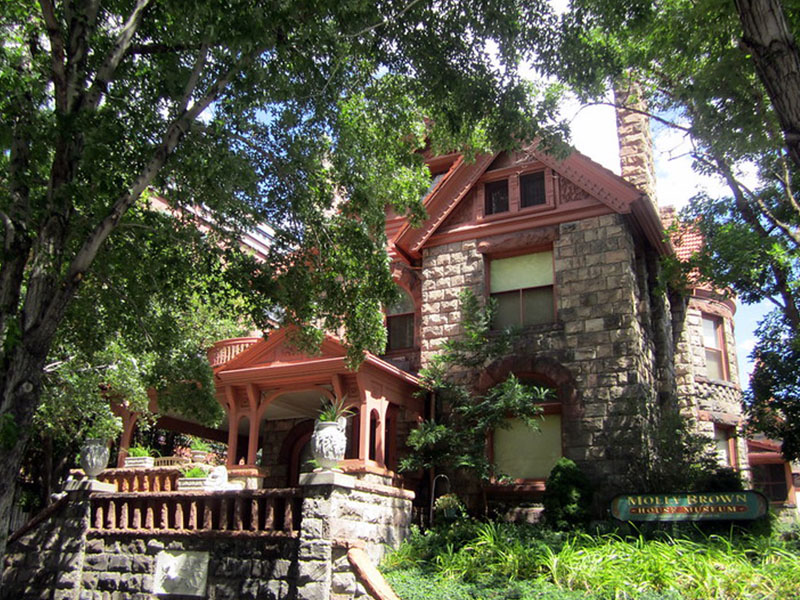
Amidst the more modern Capitol Hill buildings, the Molly Brown House Museum stands undisturbed as a perfectly preserved window to the past. On the outside, it looks just like other Denver historic homes, with a Queen Anne and Richardsonian Romanesque style made of rhyolite and Manitou sandstone. However, it’s the famed story of its previous owner that makes this particular historic home noteworthy.
The house on Pennsylvania Street was originally built in 1889 by architect William Lang. It was supposed to be for Isaac and Mary Large but was sold to James Joseph and Margaret Brown in 1894. Margaret Brown would soon become an important historical figure known as Molly Brown. Apart from being a socialite and activist, Molly was called “unsinkable” for surviving the Titanic tragedy in 1912.
The Browns sold the house during the early 20th century and has since been used as an apartment building, a boarding house, and more. Now, it’s known as the Molly Brown House Museum, where historical artifacts are displayed across the house’s perfectly preserved walls and furniture. Before the pandemic, the Molly Brown House Museum received around 55,000 to 60,000 tourists a year. The museum is open once again and is holding a special exhibit called, “Heroine of the Titanic” until September.
Byers-Evans House
1310 Bannock Street
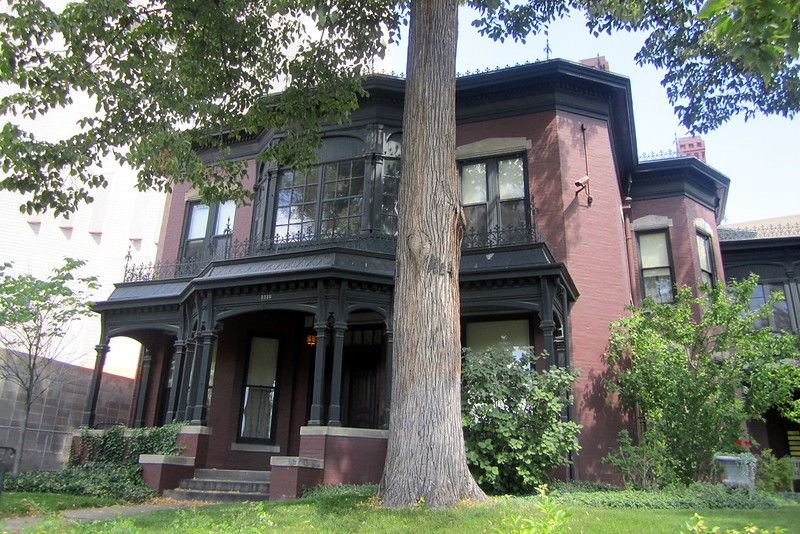
This Italianate-style two-story house was originally constructed in 1883 for Elizabeth and William Byers. William Byers was known as the founder of the Rocky Mountain News.
The Evans family eventually bought this house from the Byers in 1889. From then on, generations of their family would live there for more than 90 years. Some Evans family members made their own marks in history, like Cornelia Evans and her daughter, Josephine. Cornelia served as a leader in Denver’s American Red Cross, while Josephine helped support the efforts in France during World War I.
Today, the Byers-Evans House is popularly known as the Center for Colorado Women’s History. Apart from displaying historical artifacts, most of which belonged to the Evans family, the museum also aims to highlight the often-overlooked role of women in history, especially those who are poor or in the working class. The museum, which began operating in 1990, offers six tours for both children and adults.
The benefits of owning a historic home
What we mentioned earlier was just a glimpse of the many historic homes in Denver. In reality, there are more historic homes throughout the city, each with its own unique style, charm, and history. Imagine yourself living in a house brimming with character, all the while reminiscing about simpler times without technology.
If you’re currently in the market for a new place, you can either go for the minimalist designs of a modern home or opt for the more homely charms of a historic home. Here are some of the reasons why historic homes are a worthwhile investment.
Immediate availability
One thing about new homes is that you can’t always move there immediately, especially if construction is still underway. On the other hand, you don’t have to wait for those finishing touches when you buy an old historic home. Once the deal is sealed, you can plan your move as soon as possible, especially if you’re eager to start a new life in a new place.
Cost savings on furnishings
Some historic homes already come complete with furniture and other items for comfortable living, and you might find yourself loving them. You can even strike a deal with the seller to include the furniture you love in the final sale. This is something worth looking forward to, especially if you’re buying a house for the first time or upsizing your living space. This means, you don’t have to spend more to furnish your home – everything you’ll need is already there.
An ideal location
Most historic homes for sale are usually built near, or right in the middle of, the center of town. Given this strategic location, you won’t have to worry about driving or commuting because everything you need, including shops, schools, and other community amenities, will be within walking distance.
Noteworthy neighborhoods
Historic homes for sale are often located in the most interesting neighborhoods. Some of your new neighbors might even be able to tell you everything you need to know about the area. Whether it’s a popular restaurant for a nice dinner or the best school for your kids, all the answers to your burning questions about your new neighborhood might just be a conversation away.
Lower costs compared to new houses
Most of the time, old historic homes cost less than new homes. The price tag would still depend on many factors such as location, but generally speaking, buying an old historic home would cost you less than a new one. This is perhaps one of the biggest reasons why home buyers are looking at old homes in the market, apart from their distinct charm.
A supportive community
Understandably, many home buyers are not thrilled by the idea of renovating an old historic home. Some might even say that the cost of renovation could end up higher than the cost of buying the old house in the first place.
However, you don’t have to worry about doing everything alone, as there are lots of people who can help you out. Apart from the neighborhood, you can reach out to online forums and ask for helpful advice. You’ll surely find a lot of help there, from affordable contractors who can do the job to shops where you can find the right materials at an affordable price.
Preserving the town’s history
A single historic home can tell many stories, and you’re helping the community preserve it by buying and restoring it to its former glory. Many of those who have bought historic homes recall having conversations with the people who used to live in the properties and the great memories they had of living there. This is a valuable thing that cannot be bought with all the money in the world.
Higher value
As with any other house, a vintage home’s value only increases over time, especially if you pick the right location. This is particularly true for old homes in historic districts since the neighbors are not allowed to install unsightly additions and lower the value of their surrounding properties. Should you decide to move, later on, you might be able to sell your historic home for a higher price, especially if the demand for homes is strong in your neighborhood.
Choosing the right historic home
Whether you’re buying a house for the first time or you’ve mastered the standard home-buying transaction, the general process remains the same. Browse through the listings, narrow your choices down to a shortlist, have your finances in order, schedule a visit to your chosen properties, and seal the deal.
However, there are some extra steps you need to take if you’re planning to buy a historic home. Take these factors into consideration before taking the next steps:
Learn the difference between a historic district and an individual historic designation
As mentioned earlier, old homes in a historic district often have higher values, though they come with a more stringent set of rules. For instance, you’ll need to seek approval from the town’s architectural review board before making any changes to the house’s exterior. This is to preserve the historic integrity of the neighborhood.
On the other hand, homes with an individual historic designation don’t often come with these rules. This designation is simply to recognize the home’s historical importance. Keep in mind the difference between the two as you browse through the inventory of available historic homes.
Have the proper insurance
Having the right insurance is especially important for these historic homes. Since these houses are built differently compared to new homes, there might be limits as to what the insurance may cover if, say, there are problems with the walls or the plumbing. Apart from a bank appraisal, you’ll want an insurance inspection to identify possible issues with the house and to know the extent of the coverage you’ll need. This way, you can be advised by an insurance agent on the policies you should get.
Review the entire property
Some historic homes also come with additional structures such as barns, smokehouses, and tenant houses. Make sure you’re well aware of these structures as they might also hold historical significance to the property. Bear in mind that buying a particular property might mean owning those structures, as well, and would require additional costs for their maintenance and upkeep.
Maintaining a historic home
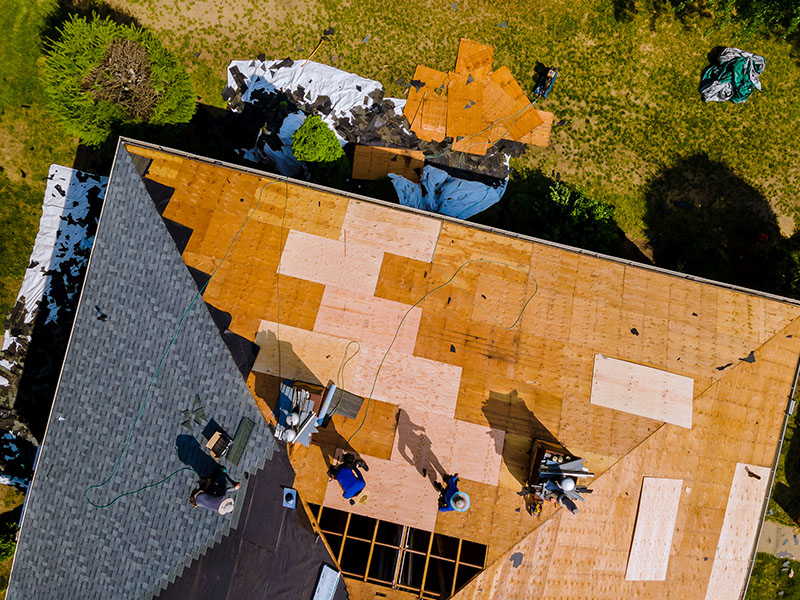
The work doesn’t end with buying a historic home. You’ll need to put in effort toward maintaining not only its looks but its historical importance, as well. It may sound like a lot of work, but it’s all going to be worth it.
Here are some tips on maintaining a historic home.
Repairs should not change anything
At some point, your home will need repairs. Your goal is to have the issue fixed without making any changes to the original look of the house. You may even have to employ some techniques used specifically for old homes, like using materials such as wood, mortar, and brick.
Be careful in maintaining the floors
If the historic home has hardwood floors, expect to see scratches and dents that come with its years. These might be unsightly, but these can actually add charm to the house. What you’ll want to do is to treat your floors with the utmost care to avoid adding more scratches and dents. If you believe the damage to the floor needs sanding, make sure to do it by hand, not by machine.
Keep the windows
They don’t make windows like the ones found in historic homes anymore, so think twice before replacing them. While they may not offer the energy efficiency of modern windows, these ones are built to last and can withstand severe weather. They are also easier to repair compared to the windows of today. If you want, you can simply update the windows by installing an insert or a storm window to improve their energy efficiency.
Avoid replacing the plaster walls
Plaster walls are what make historic homes different from other homes, and having them replaced is more expensive than it seems. For one, they don’t make plaster walls the way they did before. Moreover, it would take a skilled craftsman to properly install these plaster walls. Thus, it’s better to keep the plaster walls of your historic home untouched rather than have them replaced. If you see any signs of damage, simply have them repaired.
Love the historic elements
The things in a historic home that might seem odd are actually the ones that add character to it. The crooked staircase, for instance, might be of historical significance. These little elements, odd as they may seem to you, can actually add value to the property.
More importantly, it’s your job as the owner of a historic home to preserve the elements that make it historically significant. Owning a historic home is a responsibility, and you should be prepared to take on the challenge of preserving the history of the neighborhood.
Expert advice on historic homes? You got it!
Buying a historic home requires more careful deliberation on your part. As mentioned earlier, you will become responsible for its upkeep and maintaining its historical significance. It is, therefore, not a decision to be taken lightly.
If you’re set on taking this responsibility, you’ll want to work with a real estate agent who specializes in historic homes. Unlike your typical agent, he should be knowledgeable about what makes a historic home valuable and a great long-term investment.
For this undertaking, let me – Mark Muller – take on the task of helping you find a historic home in Denver that you can call your own. As a Denver resident for over 30 years, I know every nook and corner of the local market and can give you expert advice on real estate, particularly on the area’s historic homes.
Our team, The Muller Group, understands that buying a historic home is not just a transaction but a significant decision in your life. That’s why we offer our brand of unparalleled quality of service to help you make the best choice.
Ready to be the next owner of a historic home in Denver? Start the conversation by sending us a message here or by calling us at +303.941.6926. We can’t wait to help you find your next home!
